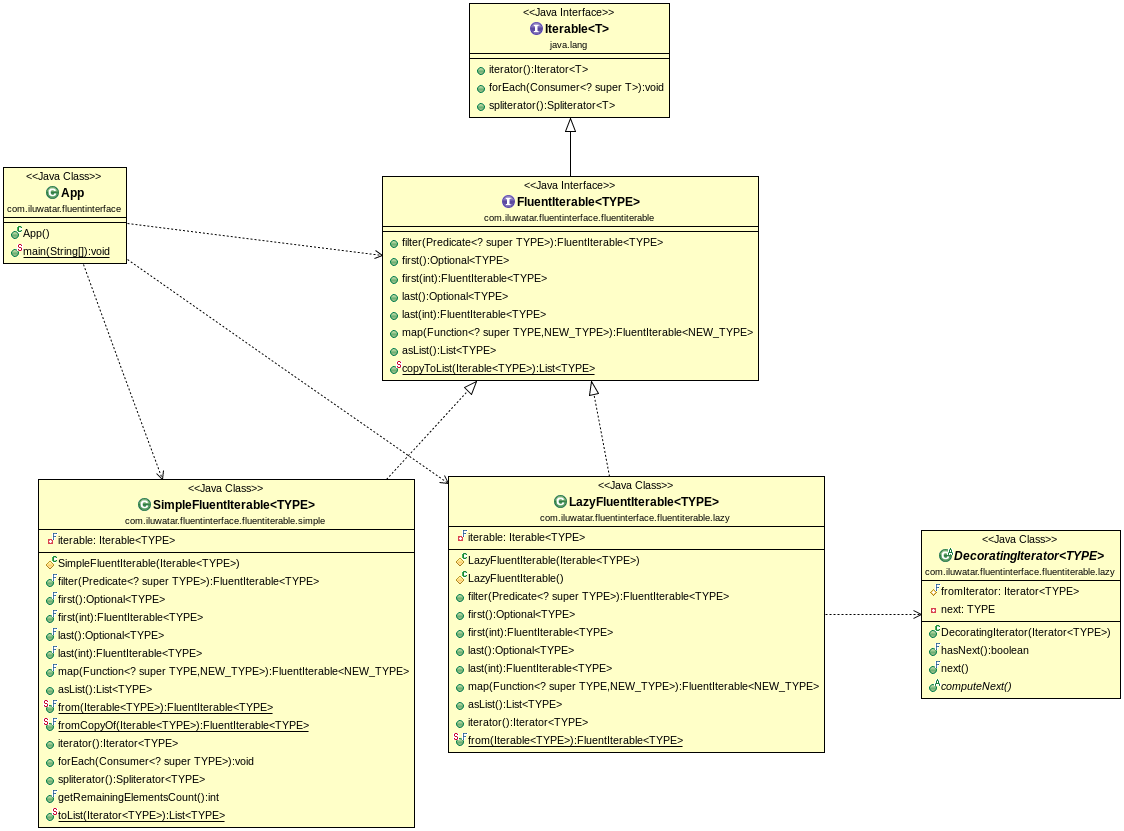* Made minor changes in some patterns such as removed throws clause where not needed, changed incorrect order of arguments in assertEquals * Minor refactorings and code style changes. 1) Removed several use of raw types 2) Removed unnecessary throws clauses 3) Used lambda expressions wherever applicable 4) Used apt assertion methods for readability 5) Use of try with resources wherever applicable 6) Corrected incorrect order of assertXXX arguments * Removed unused import from Promise * Addressed review comments * Addressed checkstyle issue
layout, title, folder, permalink, categories, tags
| layout | title | folder | permalink | categories | tags | |||
|---|---|---|---|---|---|---|---|---|
| pattern | Fluent Interface | fluentinterface | /patterns/fluentinterface/ | Other |
|
Intent
A fluent interface provides an easy-readable, flowing interface, that often mimics a domain specific language. Using this pattern results in code that can be read nearly as human language.
Implementation
A fluent interface can be implemented using any of
- Method Chaining - calling a method returns some object on which further methods can be called.
- Static Factory Methods and Imports
- Named parameters - can be simulated in Java using static factory methods.
Applicability
Use the Fluent Interface pattern when
- you provide an API that would benefit from a DSL-like usage
- you have objects that are difficult to configure or use
